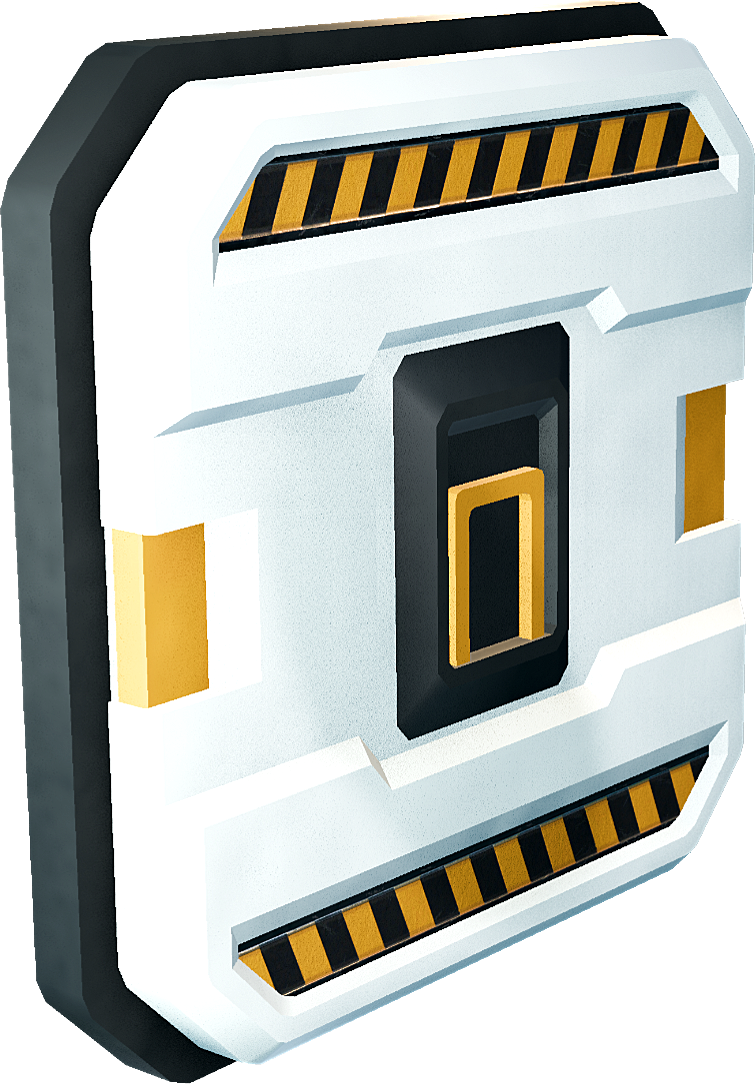Difference between revisions of "User:DustyFB/Sandbox/Cargo Lock Beam"
(Created page with "{{Otherlang2 |de=Cargo_beam:de |fr=Cargo_beam:fr |zh-cn=货运光束 |ru=Грузовой луч |pl=Cargo_beam:pl |ua=Вантажний промінь |jp=カーゴビーム...") |
|||
| (9 intermediate revisions by the same user not shown) | |||
| Line 19: | Line 19: | ||
<!-- Usage section --> | <!-- Usage section --> | ||
|electricIn=5 + 0. | |electricIn=5 + 0.002⋅(X kg) | ||
|electricOut= | |electricOut= | ||
|coolantIn= | |coolantIn= | ||
| Line 29: | Line 29: | ||
|sockets= | |sockets= | ||
|YOLOLchips= | |YOLOLchips= | ||
|modInterfaces= | |modInterfaces= | ||
|deviceInterfaces=1 | |||
<!-- Resources section --> | <!-- Resources section --> | ||
|weight= | |weight=536.73 kg | ||
|volume= | |volume=54.91 kv | ||
|corrosionResistance= | |corrosionResistance=400 | ||
| | |bastium=76.92% | ||
| | |tengium=7.69% | ||
| | |vokarium=7.69% | ||
|ilmatrium=7.69% | |||
| | |||
}} | }} | ||
The cargo lock beam device emits a laser which locks onto any object within its trajectory, and is most commonly used in spaceships designed for cargo transportation. For safety reasons, cargo locking beams do not affect [[Endoskeleton|endoskeletons]]. | |||
The | |||
For safety reasons, | |||
== Basic information == | == Basic information == | ||
A cargo lock beam can be used in conjunction with other beams to lift or move objects in the universe. At least three beams are needed to lock an object in place, and the beams should each be roughly perpendicular to one another. For example: If the object being lifted is a cube, the cargo beams should target the cube from at least three different sides. | |||
Power consumption of a cargo lock beam depends on the mass of the object that it is holding. A single cargo lock beam consumes 5 electricity per second while active, and an additional 0.002 electricity per kilogram of mass it is locked onto. The mass locked by beams are evenly distributed between the beams: 3 cargo lock beams supporting a single 1,500 kg object would each support 500 kg, and consume 5 + (500 ⋅ 0.002) = 6 electricity per second. | |||
The mass locked by beams are evenly distributed between the beams | |||
== Device fields == | == Device fields == | ||
{|class="wikitable" | {|class="wikitable" | ||
! YOLOL field | ! YOLOL field | ||
| Line 85: | Line 67: | ||
| 0 - 2 | | 0 - 2 | ||
|} | |} | ||
To learn more about the usage of fields, consult these wiki pages: | |||
* [[Universal tool|Universal Tool]] | |||
* [[Data networks|Data networks]] | |||
To learn more about | * [[YOLOL|YOLOL]] | ||
* [[ | |||
* [[ | |||
[[ | |||
Latest revision as of 11:29, 21 May 2021
The cargo lock beam device emits a laser which locks onto any object within its trajectory, and is most commonly used in spaceships designed for cargo transportation. For safety reasons, cargo locking beams do not affect endoskeletons.
Basic information
A cargo lock beam can be used in conjunction with other beams to lift or move objects in the universe. At least three beams are needed to lock an object in place, and the beams should each be roughly perpendicular to one another. For example: If the object being lifted is a cube, the cargo beams should target the cube from at least three different sides.
Power consumption of a cargo lock beam depends on the mass of the object that it is holding. A single cargo lock beam consumes 5 electricity per second while active, and an additional 0.002 electricity per kilogram of mass it is locked onto. The mass locked by beams are evenly distributed between the beams: 3 cargo lock beams supporting a single 1,500 kg object would each support 500 kg, and consume 5 + (500 ⋅ 0.002) = 6 electricity per second.
Device fields
| YOLOL field | description | range |
|---|---|---|
| CargoBeamOnState | Dictates whether the beam is on or off. 0 = off, any other value = on. | |
| CargoBeamSearchLength | The maximum distance from where the beam can lock onto objects. Measured in meters. | 0 - 1000 |
| CargoBeamStatus | The current status of the beam, 0 = off or unlocked, 1 = touching object but unlocked, 2 = locked | 0 - 2 |
To learn more about the usage of fields, consult these wiki pages:
